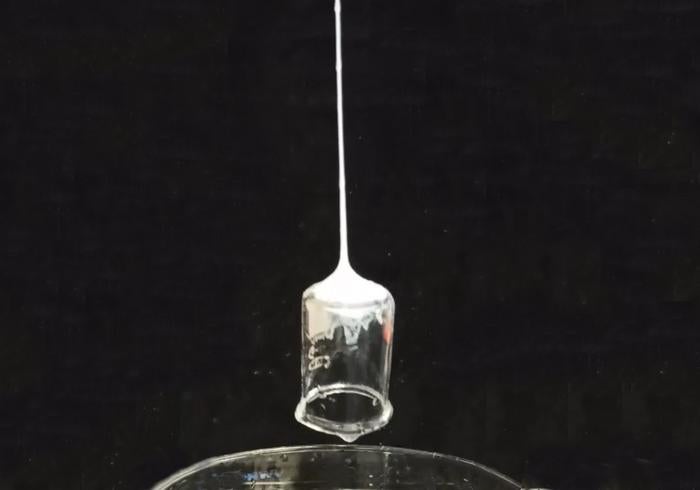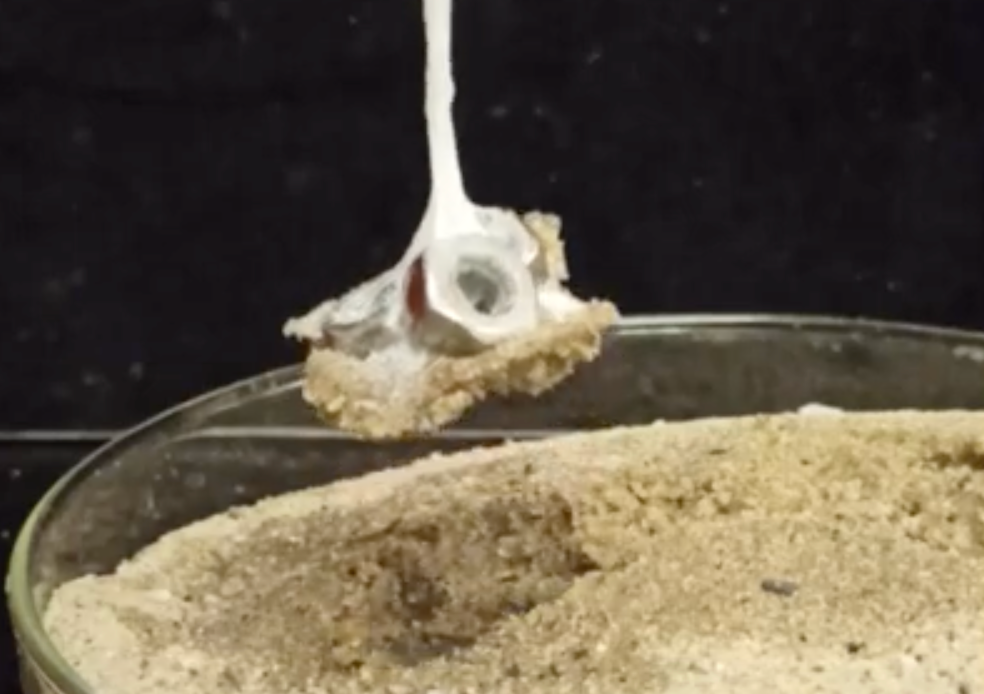Scientists have finally developed a real-life Spider-Man sticky-web gadget
Silk fibre shot through needle lifts steel bolt, scalpel and wooden block
Scientists have developed a fluid that turns into a strong sticky fibre when shot out of a gadget to lift objects several times its weight – a breakthrough inspired by comic book superhero Spider-Man.
Researchers have long sought to create strong fibres that could be deployed as tethers, inspired by the silk secreted by moths, spiders and several other insects.
But developing such fibres with the stiffness, elasticity and adhesive properties of spider silk has been a challenge – until now, researchers at Tufts University say.

Fortified with the right additives, a silk moth protein, called fibroin, shot through a narrow needle can form a tough sticky fibre, according to a new “accidental breakthrough” described in Advanced Functional Materials. “I was working on a project making extremely strong adhesives using silk fibroin and while I was cleaning my glassware with acetone, I noticed a web-like material forming on the bottom of the glass,” study co-author Marco Lo Presti said.

Initially attempting to replicate spider threads, researchers noticed that fibroin solutions formed a semi-solid gel when exposed to chemicals like ethanol or acetone over several hours. But with the chemical dopamine, the solidification process occurred “almost immediately” to create high-tensile sticky fibres.
The dopamine mixture appeared to accelerate silk protein’s transition from liquid to solid by taking away water from it, scientists say.

They also found a thin stream of the silk solution, surrounded by a layer of acetone, turned into a sticky solid when shot through a special needle. As the acetone evaporated in the air, the fibre attached to any object it contacted.
Adding chitosan, a protein found in insect exoskeletons, made the fibres up to 200 times more tensile, while chemicals like borate buffer seemed to increase the adhesiveness about 18-fold, scientists say.
The diameter of the fibres can be controlled to range from the width of a human hair to about half a millimetre, depending on the bore of the needle.

The fibres shot this way can pick up objects over 80 times their weight under various conditions, scientists say. In various tests, the fibres picked up a “steel bolt, a laboratory tube floating on water, a scalpel partially buried in sand and a wood block from a distance of about 12 centimetres”.
Although spider silk is still some 1,000 times stronger, scientists say, the new fibres can be improved for various applications. “This process can be finely tuned to achieve a controlled fabrication of instantaneously formed adhesive hydrogel fibres,” Dr Dr Lo Presti said.
“It’s really a superhero-inspired material.”
Join our commenting forum
Join thought-provoking conversations, follow other Independent readers and see their replies
Comments